So...to re-interate....a "herp" is a generic term for amphibians and reptiles (the study of these critters is called Herpetology). Whereas a "herpe" is something you'll never read about on this blog.
_______________________________________________________________
Yesterday, I posted about my first good haul of captures in my survey equipment this year (drift fences and coverboards). The scaly and slimy goodness continued today, much to my happiness!
We had several massive thunderstorms blow through the area last night. I was hoping the rain would stimulate some amphibians to move around alittle...and they did!
But, let me start with my drift fence capture from yesterday (as promised in my last post). This one was in the "pitfall" trap along one of the fences I have in an upland deciduous forest. I have one pitfall trap associated with each drift fence. It consists of a 5-gallon bucket dug into the ground so the lip of the bucket is flush with the surface of the dirt. The fence then leads critters to the bucket and they fall in. It's a live trap.
Above: the drift fence leading up to the pitfall trap
The wormsnake is easy to identify. Their dorsal (upper) surface is brownish-red, with sleek scales. Their ventral (lower) surface is often rosy or pinkish in color. The head is very small (likely becuase they eat primarily soft-bodied invertebrates, such as worms), as are the eyes.
Above: the small head and eyes of the wormsnake, buried beneath its coils.
The most unique character is the hardened, pointed tail-tip (sometimes called a "tail spine"). They often press this tail tip into the hand of anyone that attempts to restrain them. This defensive behavior is almost laughable, as it causes no discomfort whatsoever to a human. However, perhaps it is effective against other smaller predators that may threatened these snakes in the leaf litter of the forest floor.
Above: the hardened "tail spine" of the wormsnake.
Behavioral observations of this species are uncommon. However, some unique anecdotal reports exist in the literature regarding their defensive behaviors. Pressing the "tail spine" into the hand of a would-be captor is the most commonly reported defense. Kapfer and Slone (In Press) also report a bizzare bit of defensive behavior involving an individual that partially buried the front 3/4 of it's body in leaves, lifted its exposed tail and wagged it's tail in a serpentine fashion. In addition, Diefenbacher and Pauley (2009) observed an individual hiding its head beneath it's coils, while holding the tip of it's tail vertically. The assumption is that the head is buried in the coils and the tail is presented to the predator in the hopes that the tail tip is focused on, rather than the head. In theory, a predator damaging the animal's head is more likely to result in death than if the predator focuses on the tail. I don't know how effective this defense mechanism is.....I don't see many wormsnakes with damaged tails.
I had never seen this head-hiding behavior before.
In any event, while trying to photograph the wormsnake I caught yesterday, it presented me with half of the defensive behavior reported by Diefenbacher and Pauley, it hid its head beneath its coils (it didn't raise its tail in a vertical position, however). When I would touch the snake in the hopes of repositioning it for a better picture, it would bury its head further into it's coils. Eventually, I gave up....took a picture of the "headless" snake, buried it under some leaves nearby and went on about my business.
Above: a wormsnake exhibiting the defensive behavior that involves hiding its head beneath its coils.
____________________________________________________________
So the wormsnake was all I got in my drift fences yesterday. Yesterday was the day for coverboards being effective.
Today, it was just the opposite. The coverboards yeilded nothing, but the drift fences were crawling (literally). The massive lightning storm we had last night (and associated rain) may have gave the salamanders under the coverboards the moisture they needed to mosey along to some nice subteranean refuge.
So...I'll go through some of the highlights from the drift fences today.
The first captured critter I encountered today was in one of my grassland drift fences: the Common Gartersnake (Thamnophis sirtalis). I captured two individuals in the same fence. One in one of my wooden box traps and the other in a funnel trap.
Above: box trap associated with a woodland drift fence
Above: a funnel trap placed along a woodland drift fence
So, the first gartersnake was found in one of the box traps. The heavy rain had lead to a drop in temperature, and it was cooler this morning. The snake wasn't moving very fast and I was able to snap a shot of him in the box (normally they are shooting out as soon as its open!).
Above: my first encounter of the day, a common gartersnake (Thamnophis sirtalis) in a box trap
Above: two pictures of a Common Gartersnake (Thamnophis sirtalis) captured in a drift fence.
Common Gartersnakes are....well......common. They are probably the most commonly encountered snake throughout the eastern and midwestern USA. We even caught them in huge numbers back home in Wisconsin. They can withstand human disturbance, they are very general in their habitat needs and diet. So, I'm not shocked to have caught them today.
But that doesn't mean it isn't always a treat to catch snakes!
________________________________________________________________
I next moved into check some of my woodland drift fences and was in for a treat. One of my favorite native frogs was waiting for me in a funnel trap: Cope's Gray Treefrog (Hyla chrososcelis). Cope's Gray Treefrogs are another species that I was familiar with from my work in Wisconsin (although there it is less common than the related (and very similar) Gray Treefrog (Hyla versicolor). In fact, these two species are so similar they can only be easily differentiated by hearing the call of the breeding male for each species. While the call for both is a quick trill, the Gray Treefrog's trill is more bird-like and melodic....whereas the Cope's Gray Treefrog has a trill that sounds more like an insect, almost sounding like a flourished buzz.
There is another definitive way to distinguish these two frogs, but it is much more cumbersome: counting chromosomes. The Gray Treefrog is a tetraploid, and has double the chromosomes (48) of a Cope's Gray Treefrog, which is a diploid.
Not many people are going to go to this extreme, however! I've only ever heard Cope's Gray treefrogs calling in our area...so I'm going to assume that's what I caught (I forget my portable chromosome analyzer in the car most of the time, anyways ;) ).
Regardless of all that jazz....one thing is for certain: they are cute as heck!
Above: note the obvious toe pads. They can climb up sheer surfaces and the toes feel sticky to the touch!
Above: Talk about camoflauge!
Above: the yellow in the groin upper thigh region is typical of H. chrososcelis and H. versicolor.
__________________________________________________________________
So after finishing up my work at the first study site, I moved on to site two. Starting with the grassland drift fence, as I had did at Site 1. Again, I was in for another treat!
You may recall that yesterday, I found a juvenile Racer under one of the coverboards (which I mentioned was patterned, unlike the adults).
Today I captured a large adult Racer (Coluber constrictor) in a funnel trap. Now you can see how the juveniles and adults differ in their appearance. The adults are a beautiful sleek black, with white chins.
They also can be alittle nippy!
Interestingly, after I set it on the ground and harrassed it for a while (trying to position it for a good picture, while dodging it's angry mouth)....it went through the same head-hiding behavior that the wormsnake did yesterday. In fact, it was so committed to protecting it's head, that I was able to pick up my gear and prepare to move on for a good three minutes and the snake remained in that pose for the entire time. I eventually had to move it off into bushes for fear a hawk would nail the snake if I left it where it was.
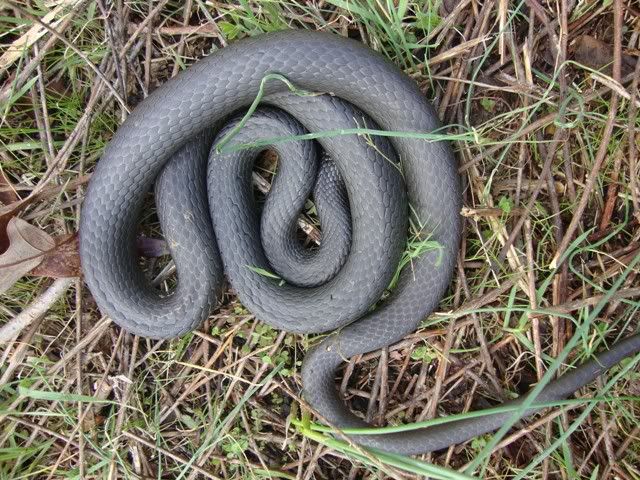
Above: an adult black racer protecting its head with its coils.
________________________________________________________________________
I'll round this out with some salamanders. Yesterday, I found two species: the slimy salamander, and the spotted salamander.
Today, when I checked on my woodland fences at site 2, I found a third species the Marbled Salamander (Ambystoma opacum). Although I found this species commonly last fall, they are a beautiful little salamander and I always enjoy seeing them. This one was in a box trap.
So long as I'm on a defensive behavior kick, why not show you some cool salamander defensive behavior.
Above: a Marbled Salamander exhibiting defensive posture.
This defensive posturing is cool as heck! As soon as I touched the salamander, it instinctively rose it's tail and dug its head into the ground (well, as much as it could in this box trap). What this accomplishes is (1) protecting and hiding the head, making it less of a target and (2) focusing the predator's attention on the tail. This makes alot more sense for the salamander than it does the wormsnake because, unlike the wormsnake's tail, the salamander's tail would make a particularly undesirable meal. When harrassed further, the salamander secretes a whitish substance from glands on its tail. This secretion is incredibly sticky (it will even cause your fingers to stick together for a few seconds). The secretion is also noxious. Brodie et al. (1979) found it will deter a common woodland floor predator: the shrew.
So, the sally protects its head, while presenting a foul, sticky tail. Brilliant!
Above: whitish secretions from glands on the salamander's tail
Above: the salamander's sticky secretion on my thumb!
Above: a handsome little salamander
I also picked up two more adult slimy salamanders, three white-footed mice (Peromyscus leucopus), and a nice little Carolina Short-tailed shrew (Blarina carolinensis). Didn't get very good pictures of them, though.
Literature Cited:
Aldridge, R.D., and D.E. Metter. 1973. The reproductive cycle of the western worm snake, Carphophis vermis, in Missouri. Copeia 1973:472-477.
Brodie, E.D., III and R.T. Nowak and W.R. Harvey. 1979. The effectiveness of antipredator secretions and behavior of selected salamanders against shrews. Copeia 1979:270-274.
Clark, D.R. 1970. Ecological study of the worm snake Carphophis vermis (Kennicott). University of Kansas Publications, Museum of Natural History 19:85-194.
Diefenbacher, and Pauley 2009. Carphophis amoenus defensive behavior. Herpetological Review 40:94-95.
Fitch, H.S. 1999. A Kansas Snake Community: composition and changes over 50 years. Krieger Publishing. Malabar, FL.
Russell, K.R., H.G. Hanlin. 1999. Aspects of the ecology of worm snakes (Carphophis amoenus) associated with small isolated wetlands in South Carolina. Journal of Herpetology 33:330-344.
Wilson, J.D. and M.E. Dorcas. 2004. Aspects of the ecology of small fossorial snakes in the western Piedmont of North Carolina. Southeastern Naturalist 3:1-12.
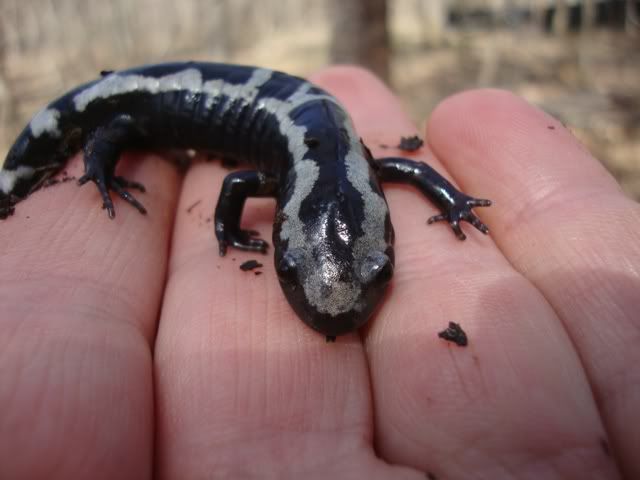
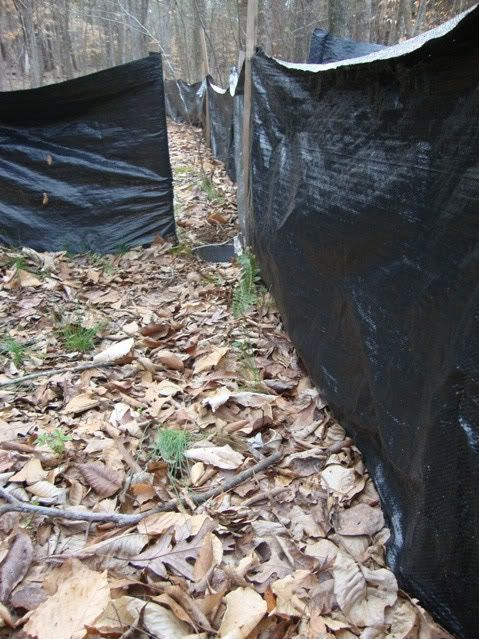

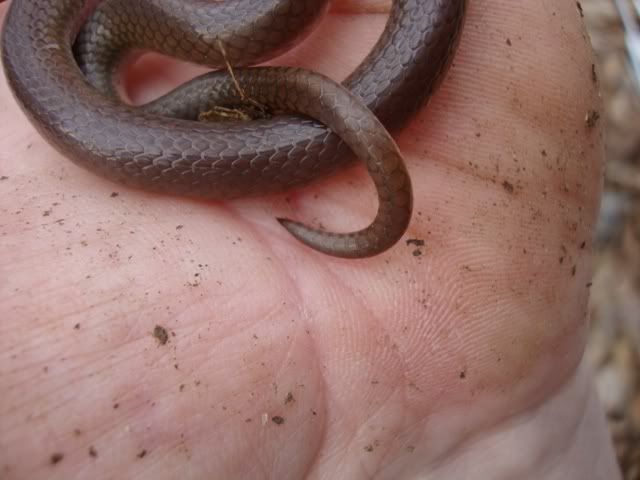
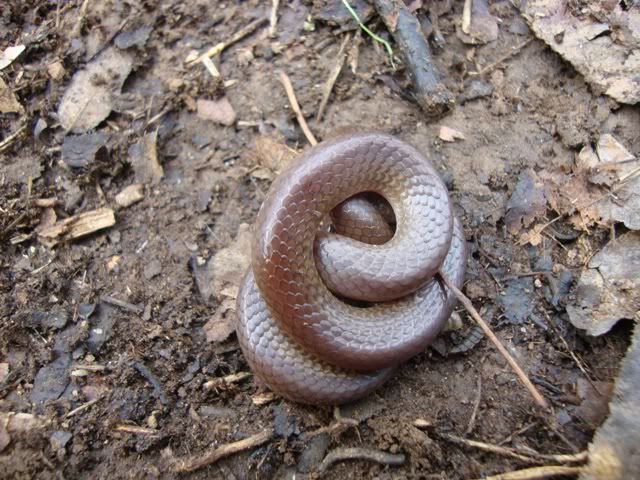
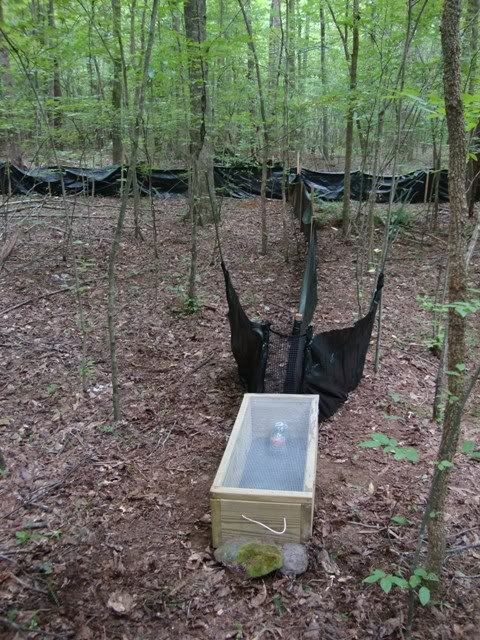



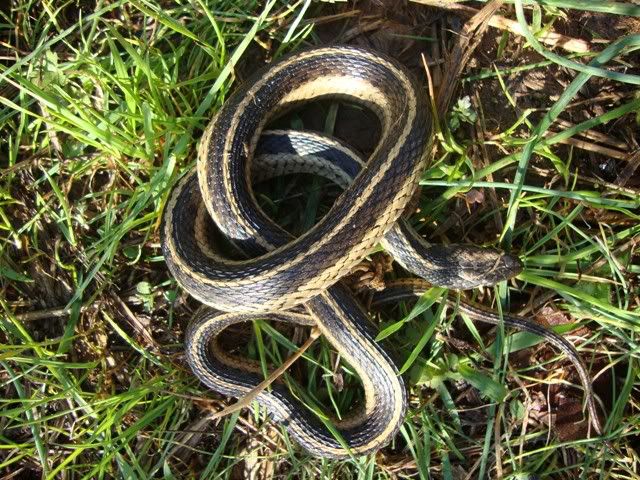
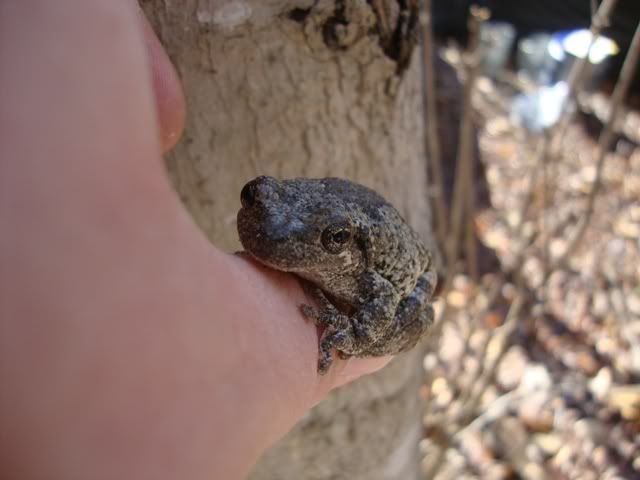
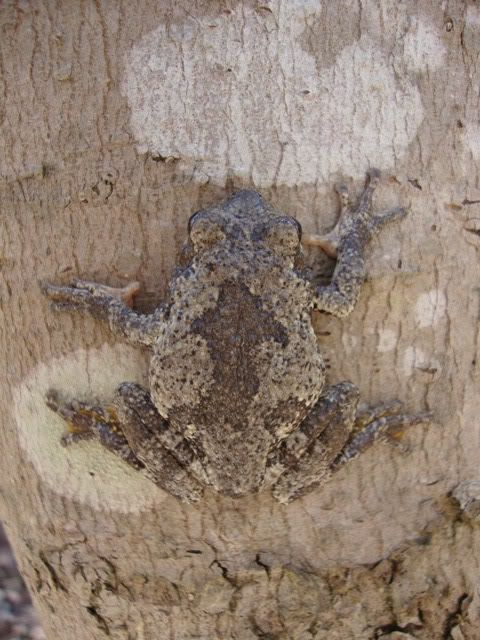
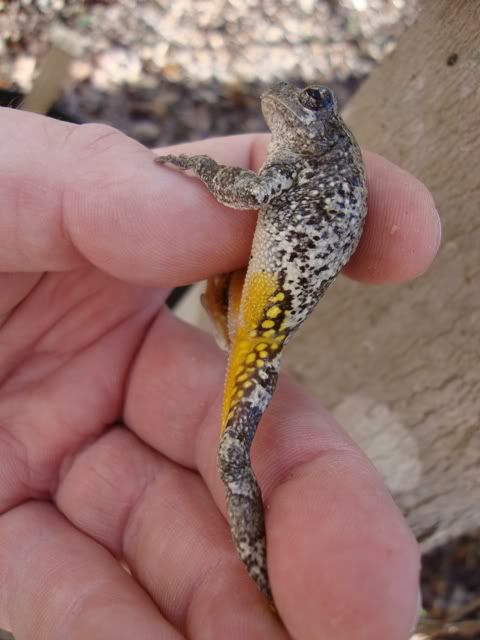
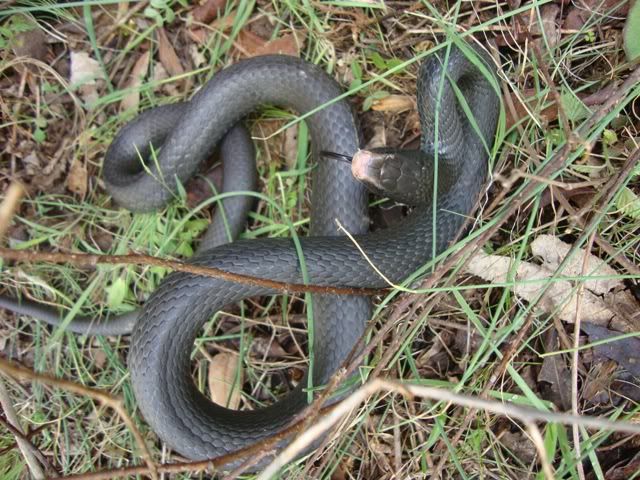
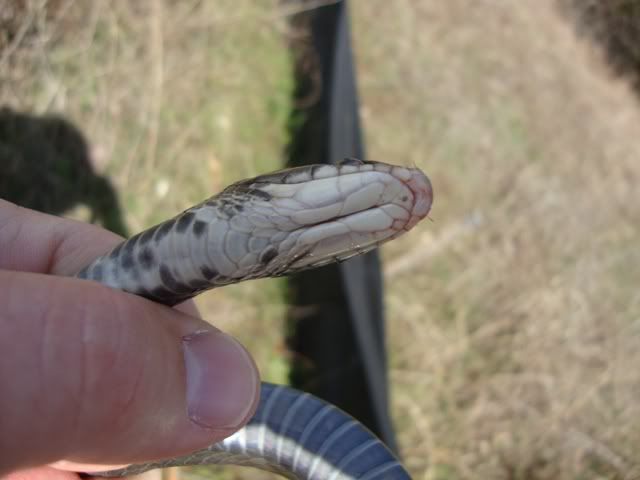
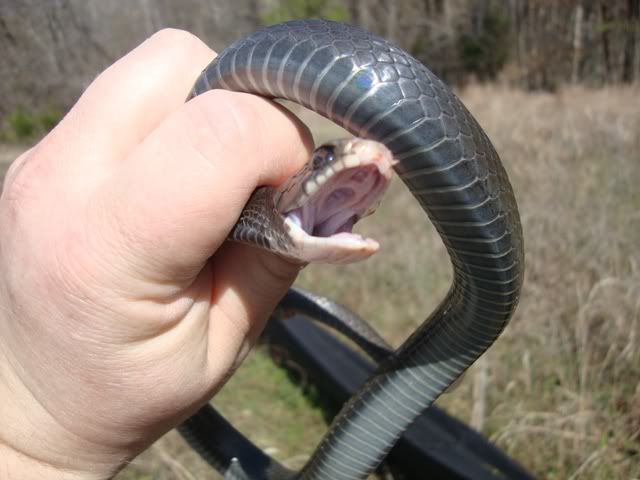
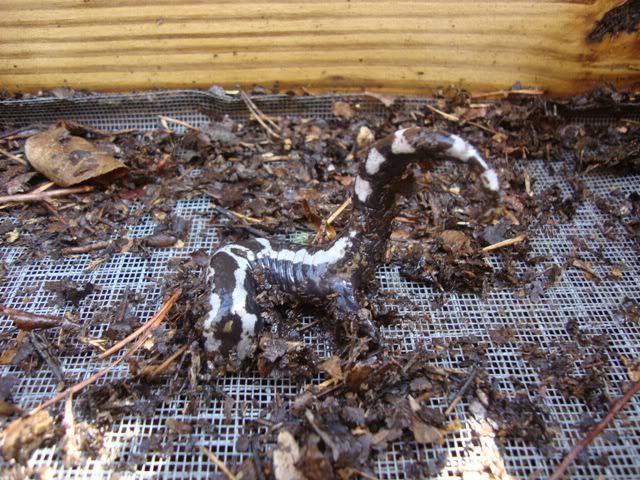

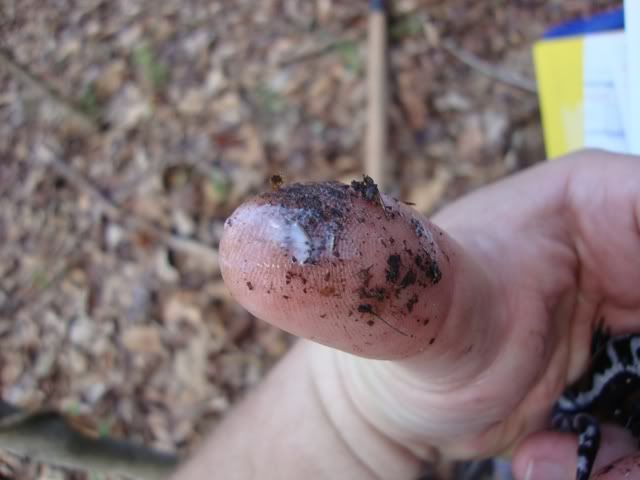

I did not know the ploidy factoid about Cope's and Grey tree frogs. Very interesting. The worm snakes may be common, but I have never managed to find fossorial species. Maybe I need a drift net!
ReplyDeleteHey JK!
ReplyDeleteInteresting about the ploidy deal....if I remember correctly, even in the Key to N. American and Canadian Herps...the last step to distinguishing these two species is to count the chromosomes!
Definately should get a drift fence. They are a ton of work to install (especially if the soil is rock hard clay like we have), but they pay off.
Thanks for posting!